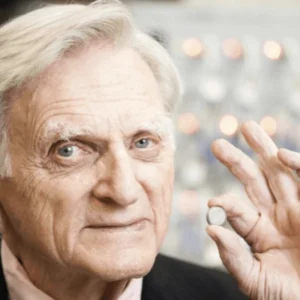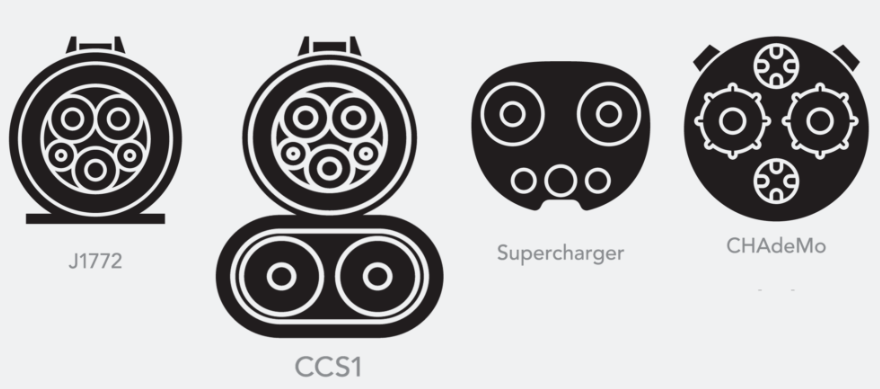EV Charging, the Front & the Back
Rechargeable batteries are now virtually everywhere, powering more and more components of modern life. The development of renewable energy sources like solar and wind has created a growing demand for clean energy storage solutions to power our buildings and transportation. Lithium-Ion (Li-Ion) batteries have revolutionized our lives; now newer battery chemistries are poised to offer sustainable, flexible and eco-friendly alternatives to traditional battery design.
The rise of portable electronic devices such as smartphones, tablets, and wearables has increased our reliance on battery power. As the global focus on environmental conservation and reducing waste intensifies, rechargeable batteries are significantly reducing battery disposal in landfills, minimizing environmental impact. New battery technologies, either building upon Li-Ion or introducing new elements like sodium, provide convenient and cost-effective solutions by allowing us to reuse and recharge the same batteries multiple times, reducing the need for constant replacements. Furthermore, battery research and development will play a crucial role in storing energy efficiently at scale, enabling the smooth integration of renewable energy into the power grid and reducing reliance on non-renewable resources like oil, gas, and coal.
Vehicle Batteries and V2G Technology
Beyond portable devices, many of the advancements in rechargeable batteries are driven by their widespread use in electric vehicles and renewable energy storage systems. Besides dominant put problematic Lithium-Ion, other emerging rechargeable batteries formulas include LFP (Lithium Iron Phosphate), NCA (Nickel Cobalt Aluminum Oxide), and NCM (Nickel Cobalt Manganese). Some promising areas of battery development include solid state batteries, which have a solid rather than a liquid electrolyte, allowing a compact construction, faster charging, and a higher capacity; and sodium ion, which has reduced cost and better safety characteristics.
Bidirectional charging, also known as vehicle-to-grid (V2G) technology, is a concept that allows electric vehicles (EVs) not only to draw power from the grid but also to supply electricity back to it. Typically, EVs are equipped with a battery pack that stores energy for the vehicle’s operation. Essentially, V2G technology recognizes an EV’s capability as a battery on wheels. With bidirectional charging, a vehicle’s battery pack can be used as a power source for external devices, including homes, buildings, or the electrical grid.
V2H (vehicle-to-home) and V2L (vehicle-to-load) are similar concepts. While V2G supports the grid, V2H supplies a home or another building with power supplied by the vehicle; V2L enables vehicle owners to use standard AC outlets equipped on the vehicle to power appliances that are within the battery’s capacity.

The Great Goodenough
John B. Goodenough, professor of engineering at the University of Texas at Austin and key inventor of the lithium-ion battery, recently died at age 100. He was active in battery development deep into his 90s and won a Nobel Prize in 2019, shared with two others when he was 97, making him the oldest Nobel winner in history. Although lithium-ion battery technology is the product of incremental developments by many scientists, Goodenough’s contributions are considered an immense milestone in its maturation; before his contributions, the Li-ion battery could explode, due to the gradual growth of lithium dendrites on the anode that could short-circuit with the cathode. Earlier in his career, Goodenough was at MIT’s Lincoln Lab, where he was a member of a team that developed an early form of RAM (random access memory).
John B. Goodenough, 100, Dies; Nobel-Winning Creator of the Lithium-Ion Battery – The New York Times
John B. Goodenough – The Inventor of the Li-ion Battery | FUERGY
EV Charging, continued
California State Senator Nancy Skinner has proposed a bill (SB233) to require all electric vehicles sold in California to be equipped with bidirectional charging capabilities; electric vehicles are a cleaner replacement for backup generators powered by polluting gas or diesel fuel.
These capabilities are particularly valuable during power outages, natural disasters, or emergencies when grid power may be disrupted. Electric vehicles, acting as portable energy storage units, can offer a reliable and sustainable alternative to traditional backup generators, reducing dependence on fossil fuels and providing a cleaner energy option for homeowners. This also promotes the efficient use of energy by utilizing the stored power in EVs, which often have large battery capacities that exceed the daily driving requirements of most individuals.
Japan’s Earthquake and Fukushima
Japan’s efforts at diversifying its power grid can provide the world with valuable data that can be adjusted to other countries’ circumstances. The Tohoku Earthquake that struck Japan in 2011 disabled the power supply and cooling of the Fukushima Daiichi Nuclear Power Plant. This catastrophic event led to increased awareness of the vulnerability of centralized power grids and the importance of decentralized energy systems.
Following the disaster, Japan placed a stronger emphasis on renewable energy sources, such as solar and wind power, as well as energy storage solutions. V2G technology emerged as a promising solution, as it allowed electric vehicles to not only serve as means of transportation but also as distributed energy resources that could store and supply electricity back to the grid during peak demand or emergencies.
Japan’s strong commitment to reducing greenhouse gas emissions and dependence on fossil fuels played a significant role in driving V2G technology. The government implemented supportive policies, incentives, and research initiatives to encourage the adoption of EVs and the integration of renewable energy sources into the grid.
Furthermore, Japan’s robust automotive industry and technological innovation culture contributed to the development of V2G technology. Collaborations between automakers, utilities, and research institutions were established to explore and advance the capabilities of bidirectional charging systems. These collaborations helped accelerate the deployment of V2G infrastructure and fostered the necessary partnerships to make V2G a reality in Japan.
Common Vehicle Charging Systems
CCS: Combined Charging System is the standard used throughout Europe, and is also used elsewhere.
NACS: North American Charging System is used by Tesla vehicles everywhere outside Europe. Widely compatible with Tesla’s Supercharger network of chargers and increasingly used by other manufacturers.
CHAdeMO: CHAdeMO was developed by five major Japanese automakers. Losing popularity outside Japan, in North America it’s still used by the Nissan Leaf and Mitsubishi Outlander.
GB/T: Commonly used in China.
CA Senate Greenlights Sen. Skinner’s SB 233, Using EVs to Power Homes
Vehicle to Grid (V2G) Technology – IEEE Innovation at Work
Bidirectional Charging and Electric Vehicles for Mobile Storage | Department of Energy
Bidirectional chargers explained – V2G vs V2H vs V2L — Clean Energy Reviews
Solid State EV Batteries: Popular Science
The Six Most Common Chemistries of Lithium Batteries
Common Chemistries of Lithium Ion Batteries
CCS? CHAdeMO? EV charger terms you need to know | Reuters
Ars Technica Guide to EV Charging
